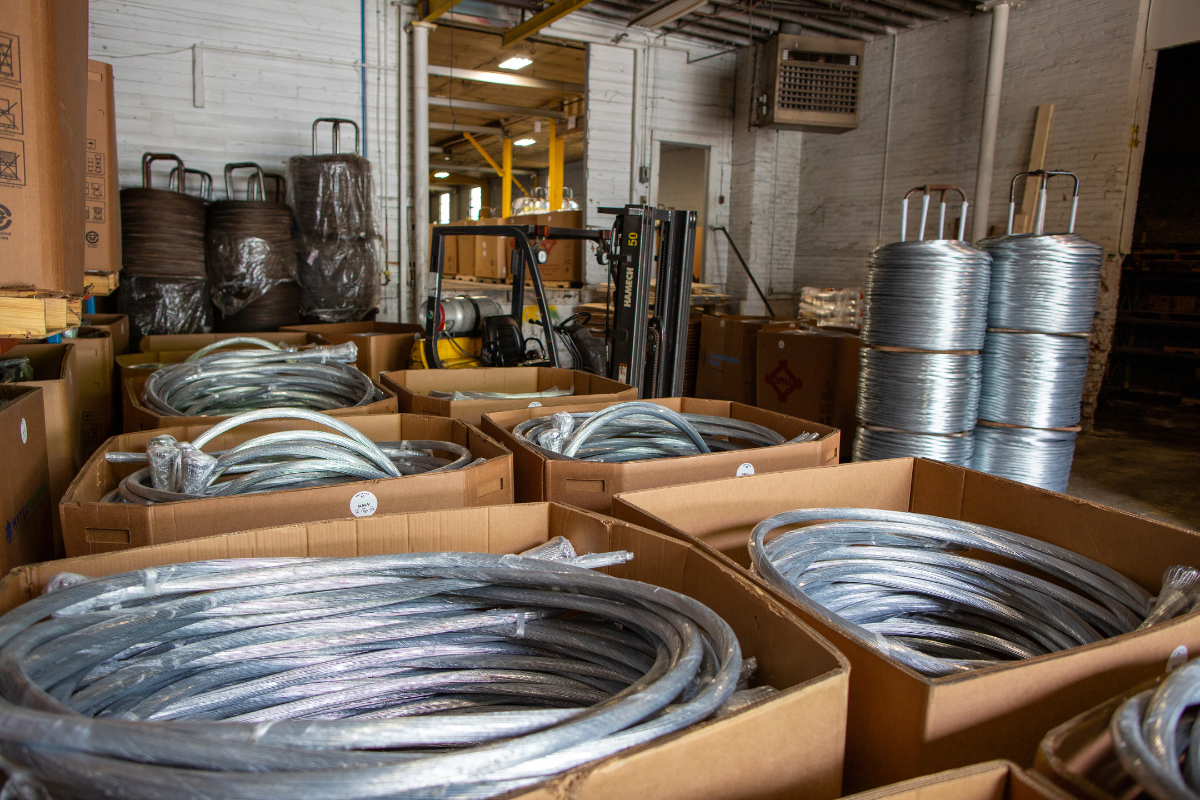Bale Wire 101: Understanding the Essentials with Midwest Bale Ties

Baling wire serves the crucial role of bundling and securing materials into compact, manageable bales. In this installment of our Bale Wire 101 series, we delve into the nuances of bale ties, their types, materials, industry applications, and selection criteria to ensure you’re equipped with the knowledge to choose the right wire for your needs.
The Three Main Types of Bale Ties
- Single Loop Bale Ties: Designed for manual bale tiers, single loop bale ties are ideal for facilities that handle baling operations by hand. Their ease of use and flexibility make them a preferred choice for smaller-scale or less automated operations.
- Boxed Baling Wire: Engineered for single ram balers, boxed baling wire comes in a form that facilitates automatic feeding and tying, streamlining the baling process in high-volume or automated environments.
- Stem Wire: Also known as carrier baling wire, stand wire, or stump wire, stem wire is used in high-production double-ram balers, or two-ram auto-tie balers.
Materials: Galvanized vs. Black Annealed Wire
Baling wire is crafted from two primary materials, each with unique properties catering to specific needs:
- Galvanized Wire: Known for its corrosion-resistant zinc coating, galvanized wire is the go-to for baling cleaner products where maintaining the integrity of the baled materials is paramount. Its resilience to environmental factors makes it suitable for outdoor storage and handling.
- Black Annealed Wire: Renowned for its flexibility and strength, black annealed wire is treated through a thermal annealing process to enhance its ductility. This makes it an excellent choice for baling materials with memory, such as rubber, allowing for expansion without compromising the bale’s integrity. However, it’s worth noting that black annealed wire may leave a residue on the baled products.
Industries and Applications
Baling wire finds its application across a myriad of industries, each with its specific requirements:
- Recycling and Waste Management: Facilitating the efficient bundling of materials like paper, cardboard, plastics, and metals, baling wire aids in the transport and processing of recyclables. It ensures that recyclable materials are kept compact and manageable, enhancing the efficiency of recycling operations and reducing environmental impact.
- Agriculture: In the agricultural sector, baling wire is crucial for packaging hay, straw, and other fibrous materials, ensuring ease of handling and storage. This not only preserves the quality of agricultural products but also maximizes space efficiency in storage and transport.
- Construction and Demolition: Beyond its conventional uses, baling wire serves as a quick and reliable solution for tying together construction materials such as rebar, contributing to the structural integrity of buildings and infrastructure projects. Additionally, baling wire is extensively utilized in securing and supporting ceiling systems and suspended utilities within buildings.
- Manufacturing: From securing bundled goods for shipment to compacting waste materials for disposal, baling wire is integral to maintaining an organized and efficient manufacturing environment. Beyond its role in logistical support within facilities, it offers a unique advantage by enabling manufacturers to bale packaging overages. Instead of incurring costs to dispose of excess materials, companies can transform this would-be waste into an additional source of revenue by baling and selling it.
Selecting the Right Baling Wire
Choosing the appropriate baling wire involves considering various factors such as:
- Gauge: The thickness of the wire should match the weight and density of the material being baled and weight of bale being made
- Length: The length of the wire should be compatible with the size of the bales and the capacity of the baling equipment.
- Material: Consider the end use of the baled materials and any specific requirements, such as residue-free bales or weather resistance.
We are Here to Help!
Selecting the right baling wire is crucial for optimizing your baling operations, ensuring safety, efficiency, and the integrity of your baled materials. Whether you’re baling for recycling, agricultural, construction, or manufacturing purposes, understanding the types of bale ties, their materials, and applications is key to making an informed decision.
If you’re uncertain about the best baling wire for your needs, the experts at Midwest Bale Ties are here to assist. With our extensive knowledge and comprehensive range of baling solutions, we can help you find the perfect wire for your job. Contact us today, and let’s ensure your baling operations are as effective and efficient as possible.

